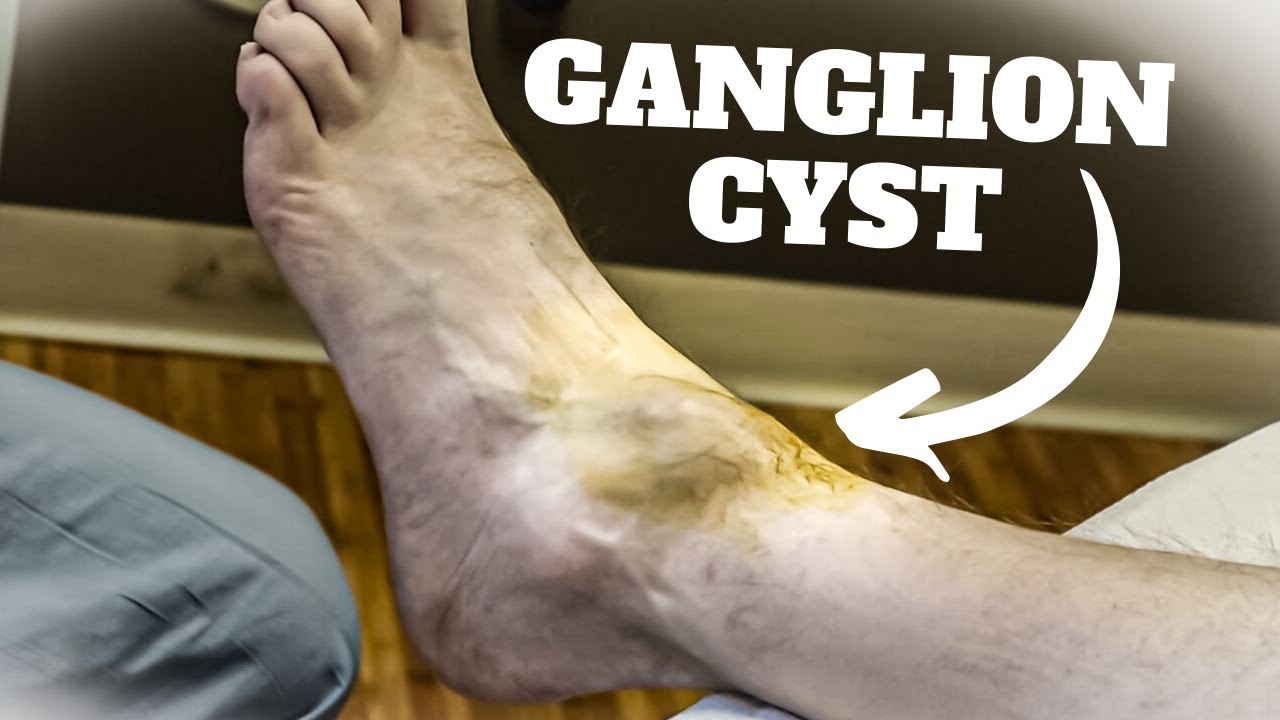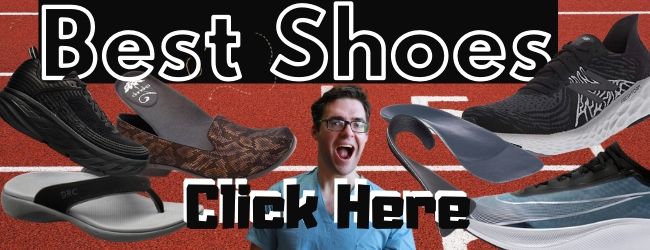Big Toe Joint, Hammer Toe & Bunionette Problems:
Ganglion Cyst in the Big Toe Joint [Causes, Symptoms & Best Treatment!]
Do you have a ganglion cyst in the big toe joint? This is a clear mucous-like fluid that is safe and non-cancerous 99+% of the time. Learn to FIX IT NOW!
Look:
- Ganglion cyst big toe pain can be improved with a few simple treatment changes.
- We are foot doctors & we see this problem get better almost every day.
- The goal is to solve this problem without medication or surgery if possible.
So, let’s GO!
Table of Contents
Ganglion cyst on the big toe treatment video:
What causes ganglion cysts on toes?
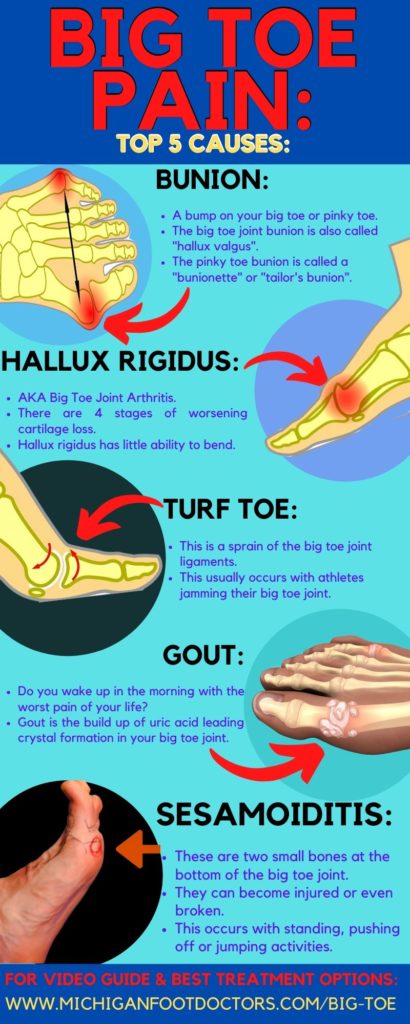
Top 5 Big Toe Joint Causes Picture & Photo Gallery:
Look:
- A bunion is a pre-dislocation of the big toe joint.
- Big toe joint arthritis is also known as hallux rigidus and can form a very large toe joint spur.
- A turf toe is the hyperextension and bending of the big toe joint. This can cause ligament and tendon damage.
- Sesamoiditis of the big toe joint is the inflammation and possible fracture of the two bones underneath your big toe joint.
- Gout in the big toe joint is the buildup of the crystal substance called uric acid.
So, check out the big toe diseases by clicking on the photo gallery for descriptions!
So, check out the big toe diseases by clicking on the photo gallery for descriptions!
Overview of a ganglion cyst in the big toe joint:
- A ganglion cyst in the big toe joint and anywhere in the foot is a common cause of foot discomfort.
- If you have a big bump on your big toe joint or your foot and you think it is a ganglion cyst- you can try pushing on it hard and seeing if it moves around, but even if it is hard, it can still be a ganglion cyst.
- If it is hard, this may be a bunion or big toe spur.
- These are usually harmless sacs of fluid, but you should definitely see a podiatrist to make sure that it is not any cancerous mass.
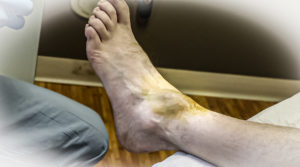
What is a Ganglion Cyst?
- In the great toe joint, the ganglion cyst is the protrusion of a tendon lubricant known as synovial fluid.
- One large cyst or many smaller cysts can appear that look like one large lump.
- This fluid is in a balloon-like sac that is normal surrounded by a joint capsule, but if there is a gap in the joint capsule, it leaks out like a balloon that is being squeezed on.
- This usually forms a small 1-3 cm sac.
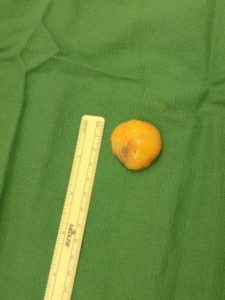
Symptoms:
- Usually, but not always painful.
- Can compress nerves, leading to numbness, burning, and tingling.
- Can compress blood vessels.
- 1-3cm Lump.
- These lumps can cause joint irritation and pain.
- Can change in size with motion and time of day.
- It can be hard or soft.
Is it dangerous?
- These ganglion cysts are not harmful.
- They can become very annoying in the big toe joint and rub against your socks and shoes, but there is no real danger.
- Ganglion cysts are prevalent in the foot. This is a condition that we see very frequently in our office. This is usually something not to be very concerned about.
- These are not cancerous, but the only way to be 100% sure is to get some imaging and a biopsy of the cyst.
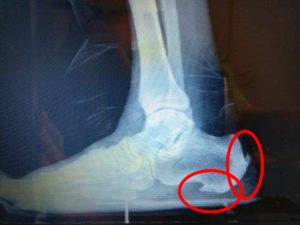
Who is most likely to get them?
- They are much more common in women. Frequently they can occur between ages 20-50 years.
Ganglionic Cyst Treatment Guide
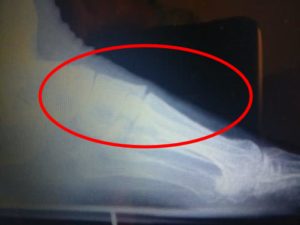
Most Common Sites:
Ganglion cysts can also be found commonly in:
- The fingers and the palm. These are usually small bumps.
- The fingertip or the tip of the small toes. These can be known as mucocutaneous cysts.
- Around the back of the knee.
- Around the ankle.
- The top of the foot. This can look like a lump or bone spur.
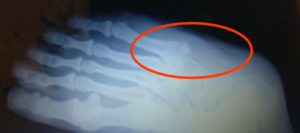
Is It Dangerous?
- Ganglionic Cysts are not Dangerous, but they can very easily be mistaken for a dangerous tumor, so always get them checked out!
- The only way to confirm this is to get imaging such as an ultrasound, an X-ray, and potentially an MRI.
- The only way to know 100% is to get a bone biopsy.
- Find out more about toe, toenail, and foot cancer.
- They can become very irritating and uncomfortable in your shoes as well. They can also change in size, which is very disconcerting!
Ganglion cyst Treatment:
- In the past, these used to be called bible bumps.
- A bible was used to smash them back into place.
- This is no longer the way to go.
- Just see your podiatrist and be safe!
- Sometimes the cysts can disappear all by themselves.
Ganglion cyst on the toe, knuckle, foot, and ankle examination:
- A physical exam by a podiatrist is the best way to make sure that it actually is a ganglion cyst.
- The podiatrist will usually try to image the cyst first with an X-ray or possibly even an ultrasound.
- The podiatrist may take an aspiration of the cyst.
- Sometimes is there is a concern, a ganglion cyst biopsy may be performed.
- If there is further concern or worry, an MRI may be ordered to solve this problem.
Ganglion Cyst Removal in Toe, Knuckle, Foot, and Ankle:
Ganglion cysts can also occur in the toe, toe knuckle, foot, and ankle.
- There are many different ways to remove these toe and foot cysts with varying levels of success.
- Ganglion cysts on the big toe joint, the smaller toes, and the foot can disappear all on their own.
- Given enough time, they can disappear. Sometimes we even book a patient for surgery, and the day of the surgery, the cyst is gone!
- Aspiration can be performed in the office to drain the cyst.
- We can also inject a steroid into the joint at the same time for higher rates of relief.
- The rate of keeping away for good is usually under 50%.
- But it does make sense to sample the fluid to make sure your ganglion cyst is not dangerous.
Ganglion Cyst Foot and Toe Surgery:
Ganglion cyst foot surgery can sometimes be an option if draining it numerous times does not work, and it causes constant pain.
- An incision is usually made directly over the cyst.
- The cyst is then excised completely with spreading scissors.
- Electrocautery can then be used to burn the stalk of the cyst as it connects to the joint.
- Ganglion cyst foot surgery is not perfect, but the rates are about 80-90% success rate over the longer term.
Ganglion Cyst of the Big Toe Joint Complete Treatment Guide
-Click on the above link for the complete home treatment guide.
Can a ganglion cyst be hard?
- A ganglion cyst in the foot and toe is usually hard.
- It can usually be mobile, but if not, this really does not mean much.
For more on a Ganglion Cyst in the Big Toe Joint
Big Toe Joint Home Treatment Infographic:
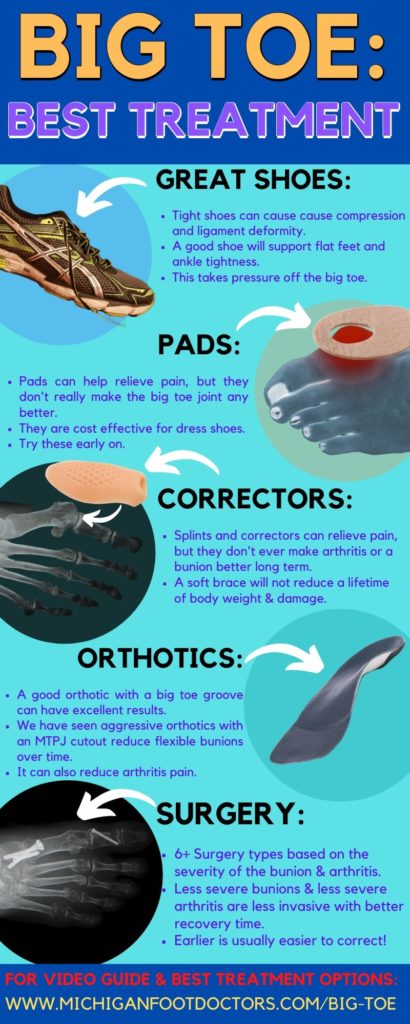
Big Toe Joint Injury or Surgery Treatment:
- If you think you might have a severe turf toe, a severe tear or sprain, a broken big toe joint or broken big toe, or you have just had surgery: this guide may be able to help you!
- Just make sure to check with your podiatrist because a severe injury will require imaging, biomechanical evaluation, and a good discussion to prevent anything from going more wrong.
- For surgery, purposes make sure to discuss with your podiatrist To see what is recommended, as every surgery is unique, and there are pros and cons to all treatment methods.
Big Toe Joint Fracture, Sprain, or Surgery Products:
- If you have a traumatic injury such as a broken bone or ligament tear, these products may be able to help you.
- The best way to do this is, of course, to see your podiatrist and get evaluated with an x-ray, ultrasound, and potentially even an MRI or CT scan.
- If you cannot do so, it may benefit you to be in a cast, fractured boot, or even keep the weight off of it with a rolling knee scooter or other protective devices.
- We as podiatrists frequently take patients off work for a very long period of time when they suffer a traumatic injury. Unfortunately, there is no other way around us in labor jobs.
- If you have a sit-down job, there are ways to get people back to work quicker, but this can be impossible otherwise.
- Just remember these injuries can take a very long time, specifically 2 to 3 months or more, to come back from if you’re going to be on your feet all day. There is a long recovery time and healing time in most cases.
Big Toe Joint Injury & Surgery Immobilization:
- There are pros and cons to using a boot to treat your big toe joint injury. If you are immobilized too long, the cons are that you will gradually become stiff and overworked to your other leg.
- The Pros are that your injured heel will hopefully have a chance to heal gradually!
- Our favorite fracture boots and their supplies:








Big Toe Arthritis and Hallux Rigidus:
- One of the best treatment options for a stiff big toe is a stiff orthotic.
- The big toe can become arthritic, and what causes the pain is the bone grinding on a joint that cannot move.
- Getting a rigid carbon insole can make a huge difference in preventing the bend of the big toe joint.
- Out of the big toe joint products in the next table, the carbon insole is worth looking at for relieving the big toe joint bed.
- A good over-the-counter orthotic can provide a similar result, and we would otherwise prefer those.








Offloading and Scooter Treatment:
- If you cannot use your foot, it needs to be immobilized: we have found success with offloading the scooters in these products.
- Crutches can be difficult long term, whereas scooters can really help you get around and to work if you have a sit-down job in this been okay-ed with your podiatrist.
- These are our favorite knee scooters and walking devices:








Best Big Toe Joint Products:
- There are usually two phases to treating big toe joint pain
- The two phases of treatment include controlling the acute inflammation with protection and correcting the biomechanics, which led to the problem in the first place.
- If the tendons, joints, and ligaments are inflamed, they are almost frozen in place and cannot function properly.
- Inflammation can mean damage as well, in this most likely needs to be protected as the big toe joint heavily relies upon the weight-bearing joint. So consider discussing with your podiatrist the need for and offloading surgical shoes or boots.
- Once the inflammation is decreased, we need to correct the biomechanical causes to ensure that they can never become overworked and inflamed again!
- The key with an injury or surgery is to keep it protected initially, and when the bone and tendon heels, to get moving before stiffness can set in.
Best Bunion Specific Products:
- There are no perfect bunion treatment products.
- Most people end up disappointed after spending a lot of money on bunion pads, bunion gel pads, expensive bunion correctors, and bunion splints!
- The truth is a bunion is a biomechanical injury. The foot is flattening out, and the ankle is flattening out, causing the pain.
- Having a gel pad on the big toe has very little chance of fixing the deformity, although it can stop the rubbing and relieve a lot of the pain.
- This is why people sometimes wear splints and correctors. It holds the toe straighter so that the tissue and were’s and have left pain.












Big Toe Joint Inflammation Control:
Massage & Ice Products:
- Ice is an excellent option that can be safe for almost everyone.
- There is some debate about whether icing is worth doing, but this can help limit the need for medications and keep your options open for chronic pain.
- This works great for your arch, less for the ball of the foot.
- The more muscle and ligament tissue there is, the better ice will work there.






Menthol Based Gels:
- Biofreeze is one of our favorites.
- This can work well as a cream or gel option for your big toe joint pain.
- These gels have been studied to work 2x as long as ice.
- This works great for the ball of the foot.
- This can be very effective for the bottom of the heel and Achilles tendon sore regions.








Massage Sticks:
- These can work great for loosening your muscles.
- This is not to be used directly onto your foot but to help take pressure off the foot’s front.
- This allows less tightness and pressure on the ball of your foot.
- This is very effective for the arch, the gastrocnemius, calf muscle, and the hamstring and thigh muscles.
- This also works very well for the gluteus muscles if you are having butt cheek or hip pain.






Remove the Big Toe Joint Pressure:
- The key is to prevent future pain and to keep pressure off of the big toe joint.
- This means keeping you active while keeping stress off of your big toe joint. This will prevent future bunions, sesamoiditis, turf toe, and even big toe joint arthritis!
- If you can get rid of the pain and swelling, this will let you start walking normally.
- If you can walk normally, the vast majority of your pain should gradually start to go away.
- The best way to ensure that your big toe joint, hammertoes, and foot and ankle ligaments are not overworked is to support them.
- The best way to support them is to use great orthotics and great shoes.
- Some people may also need to rely on supportive ankle braces and other supportive modalities.
Best Big Toe Joint & Flat Foot Shoes:
- Getting a great supportive pair of shoes will make sure that there is no further pressure onto the ball of your foot and the big toe joint region.
- This is especially important if you have plantar fasciitis, heel spur pain, or Achilles tendonitis.
- Consider shoes combined with a good supportive orthotic for the best pain relief!
- We have found shoes and orthotics to be one of the most effective ways to reduce bunion and hammertoe pain.
- The following link will show you what our favorites are.
Best Big Toe Joint & Flat Foot Orthotics:
- These are our recommended orthotics for offloading the big toe joint.
- Custom orthotics can work very well, but they should not be the first line of treatment. Custom orthotics can cost a lot of money, over the counter orthotics can be a great introduction to foot control and prevent pronation.
- There are different types of orthotics for different types of shoes.
- Women’s shoes usually need a less bulky orthotic but allow for less correction of your big toe joint and ball of the foot pain.
- A full-length orthotic requires a running shoe, boot, or comfortable walking/dress shoe.
- We recommend doing everything you can to get a good supportive shoe that can fit a full-length orthotic. This will get you the best results for your bunion, hammertoes, and bunionette.
- This is the best way to maximize your orthotics for great results.
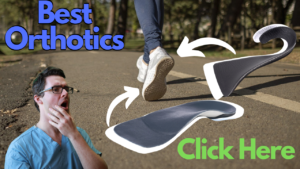
Best Full-Length Orthotics:
- These will only work in wider shoes or a good supportive running shoe.
- This will not work in sandals, flats, or most women’s dress shoes.








Best Dress Shoe Orthotics:
- These are a great choice for dress orthotics.






Best 3/4 Length Orthotics:
- These are great options for women’s dress shoes and thinner shoes.
- These are not the most supportive pair of orthotics.


Get A Great Dynamic Stretch:
- The goal of getting a great stretch is to improve your ankle flexibility and prevent ball of the foot pain and big toe joint pressure.
- It is possible to stretch on your own, but these products can also really help!
- This will take pressure off of the ball of your foot.
- We personally prefer this method of stretching.








Get A Great Static Stretch:
- These devices are great for stretching while you are resting.
- This will also help take pressure off of the ball of your foot.
- This works great for plantar fasciitis but can also make your ankle more flexible in removing pressure from the ball of your foot!
- It can be used while watching TV or at night time.






Big Toe Joint, Hammer Toe & Bunionette Problems:
